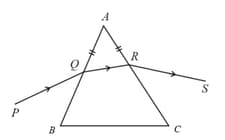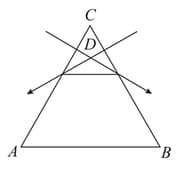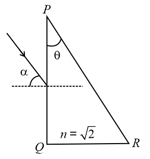HARD
Earn 100
A crown glass prism of refracting angle is to be used for deviation without dispersion with a flint glass of angle of prism . Given: for crown glass and , for flint glass and . Find
(a)
(b)
(c)
(d)
50% studentsanswered this correctly
Important Questions on Ray Optics
MEDIUM

MEDIUM
HARD
EASY
EASY
EASY
EASY
EASY
MEDIUM
EASY
MEDIUM
EASY
MEDIUM
EASY
EASY
EASY
In the given figure, what is the angle of prism?

EASY
EASY
EASY

HARD


